What if the secret to understanding the universe isn’t written in the stars but hidden in equations yet to be discovered by machines? For centuries, scientists like Albert Einstein, Richard Feynman, and more recently Michio Kaku have delved into the complexities of physics to unlock its deepest mysteries. Yet, one harrowing truth remains: quantum mechanics, which governs the smallest known particles, simply doesn’t mesh with general relativity, the theory guiding stars, galaxies, and spacetime itself. It’s as if nature speaks two contradictory languages.
Physicists have long sought a unified theory, often called the Theory of Everything (ToE), that bridges this cosmic gap. But decades of research into string theory or loop quantum gravity have teased possibilities without delivering answers. Now, a new, unexpected player has stepped onto the field: Artificial Intelligence (AI). Across industries, AI algorithms have demonstrated an almost uncanny knack for spotting intricate patterns and solving problems humans can barely conceptualize. Could AI be the ultimate collaborator to help uncover a cosmic Rosetta Stone, finally translating the universe’s conflicting laws into harmony?
Such an idea might seem ripped from science fiction, yet organizations like DeepMind and institutions such as CERN are already leveraging AI to tackle daunting tasks in quantum and astrophysics. Imagine a machine capable of proposing creative solutions to quantum riddles or reexamining black hole data to find missing links in spacetime theories. The possibilities are boundless—this article dives into how AI could revolutionize our understanding of the cosmos, unravel quantum entanglements, decode dark matter, and maybe even unify physics itself. Could technology finally solve what Einstein called “the riddle of the universe”?
1. The Need for a Unified Theory: The Challenge of Reconciling Quantum Mechanics and General Relativity
1.1 A Brief Overview: The Great Divide
At the heart of modern physics lies a contradiction so profound it defies logic: quantum mechanics, the microscopic law of the universe, and general relativity, its macroscopic counterpart, cannot coexist peacefully. Quantum mechanics thrives in describing tiny phenomena like the odd behavior of electrons, where probabilities dominate. In contrast, general relativity reigns supreme on the grand scales of planets and galaxies, elegantly bending spacetime to describe gravity.
To understand how mismatched they are, consider this: while general relativity’s smooth spacetime fabric underpins black holes’ immense gravity, quantum mechanics demands that the same space be fragmented and chaotic on the tiniest scales. This clash means we cannot fully describe phenomena involving immense gravity and quantum effects simultaneously, such as the conditions inside a black hole.
Physicists call this mismatch the central paradox of physics. Neither theory is “wrong”; instead, they’re incomplete. Bridging this divide offers not just scientific prestige but practical implications, like harnessing new forms of energy or refining expectations for phenomena like wormholes or time travel. This is why the challenge persists and demands creative thinking.
1.2 The Quest for a “Theory of Everything”
The ultimate goal? A “Theory of Everything” uniting all fundamental forces—gravity, electromagnetism, the strong nuclear force, and the weak nuclear force—into a single framework. Think of it as the “master equation” that governs reality itself. It’s a pursuit that has captivated minds since Einstein first aimed to unify physics in his closing years.
Enter string theory, which proposes that all particles are tiny vibrating strings, and loop quantum gravity, which suggests spacetime itself has a granular, quantum structure. Both approaches promise much but lack experimental verification. For decades, the effort has stalled due to impossibly complex mathematics and the sheer number of theoretical possibilities.
Here’s where AI proves enticing. Unlike any physicist working independently, AI algorithms can analyze gargantuan datasets, test millions of equations, and pinpoint inconsistencies faster than we could ever hope to. Technologies like DeepMind's machine learning models have already shown promise in developing predictive frameworks for problems previously deemed unsolvable. Could a breakthrough in unified physics be next?
2. How AI Excels Where Traditional Physics Falls Short
2.1 AI’s Strengths in Analyzing Complex Systems
Artificial Intelligence (AI) thrives in areas where traditional methods falter, especially when confronted with overwhelming data and incomprehensible complexities. Quantum mechanics, for example, deals with phenomena on such minuscule scales that the sheer computational demands of modeling quantum states often exceed human capacity. This is where AI steps in, acting like a turbo-charged detective in a labyrinth of abstract mathematical clues.
Imagine trying to solve a million-piece puzzle without the full picture — overwhelming, right? Now imagine giving the task to an AI, which can spot recurring patterns, relationships, and symmetries in a blink. Companies like DeepMind, a pioneer in machine learning, have already applied their AI expertise to predict the behavior of quantum systems. By leveraging neural networks, AI models can simulate incredibly complex systems efficiently and generate approximate solutions that are surprisingly accurate.
Consider wavefunctions, the quantum equations describing the probabilistic behavior of particles. Calculating these requires solving Schrödinger’s equation — a near-impossible task for large molecules. But AI tools, like neural quantum states, have reduced this problem's computational intensity exponentially. In essence, what would traditionally take years to compute can now be completed in weeks, sometimes days. This isn’t just futuristic hype; it's happening now, with institutions like CERN using AI to analyze petabytes of particle collision data.
2.2 The Search for New Variables and Hidden Dimensions
Even more tantalizing is AI's potential to hypothesize something that no human has ever considered: new dimensions of reality. Current physics theories often struggle because they are constrained by what we can observe. But what if the cosmos operates within variables or dimensions hidden entirely from our perception?
AI excels in unsupervised learning, where it identifies trends within datasets without predefined rules. This capability could extend to proposing radical new physics models, such as additional spatial dimensions or exotic forces. While string theorists debate the possibility of 10 or 11 dimensions, AI might independently uncover evidence for one or more of these hypothetical spaces by combing through astronomical data or collider results.
Take dark energy and quantum entanglement as examples. These phenomena defy traditional explanations, often described only in vague terms like "spooky action at a distance." By examining data from projects like NASA’s James Webb Space Telescope, an AI system could propose entirely novel frameworks — frameworks unimaginable by current theoretical physics. It’s not about replacing creativity; it’s about amplifying what human scientists can dream up.
3. Tackling Quantum Paradoxes with AI
3.1 The Measurement Problem: Observers and the Role of AI
One of quantum mechanics' most maddening riddles is the measurement problem. It questions how — or whether — a quantum system "decides" its state upon observation, a phenomenon epitomized by Schrödinger's notorious cat that’s both alive and dead until you peek inside the box. Enter AI, the ultimate experimenter unburdened by human biases or interpretative frameworks.
AI algorithms can simulate billions of quantum interactions to dissect whether reality collapses into a single outcome (the Copenhagen interpretation) or branches into infinite parallel worlds (many-worlds theory). By crunching extensive experimental data at facilities like the Centre for Quantum Technologies or Max Planck Institute, machine learning models might be able to confirm or refute these rival explanations with precision. Such breakthroughs could finally offer clarity on whether quantum "reality" is an illusion shaped by observation or a fundamental truth of existence.
3.2 Quantum Computing Meets AI
The synergy between AI and quantum computing has the potential to supercharge discoveries in previously untapped ways. Quantum computers excel at simulating quantum states with unparalleled fidelity — where classical computers fall short. By combining AI’s analytical horsepower with the parallel processing power of quantum computers, the possibilities expand dramatically.
Take Google’s quantum research program, Quantum AI, which recently achieved a breakthrough in achieving quantum supremacy. Early developments have already shown the potential for this tandem to crack age-old riddles in areas like quantum teleportation and superposition. For example, AI can tweak algorithms to identify loopholes in theories or refine experimental setups, maximizing efficiency and accuracy.
What makes this partnership revolutionary is its feedback-loop potential: as quantum computers simulate quantum particles, AI extracts lessons from those simulations and refines the parameters for the next cycle. This iterative process could lead to self-reinforcing cycles of discovery, allowing physicists to hypothesize entirely new realms of study, ranging from faster quantum cryptography to uncovering conditions for black hole entropy. AI and quantum computing might not just accelerate science — they could reinvent it.
4. Applying AI to Einstein’s Relativity and Spacetime Mysteries
4.1 The Black Hole Information Paradox
Imagine standing on the edge of a cosmic riddle that threatens the bedrock of physics itself: the black hole information paradox. When matter falls into a black hole, its information — the unique properties defining it — seems to vanish forever. But quantum mechanics states that information can never truly be destroyed. Here lies the paradox: two foundational theories, Einstein’s general relativity and the quantum world, appear at odds.
This conundrum has baffled physicists for decades, but AI-driven techniques offer promising avenues of exploration. For example, researchers at institutions like CERN and Caltech are using machine learning models to study intricate black hole dynamics. AI algorithms could detect patterns hidden in the quantum fluctuations near the event horizon, possibly providing clues about how, or even if, information is preserved.
To test this, AI can simulate various scenarios that model the geometry of spacetime distortions. These simulations might reveal how quantum information "leaks" out via Hawking radiation, as proposed by the late Stephen Hawking. A particularly exciting breakthrough came in 2022 when an AI-supported study suggested that information might be encoded within subtle spacetime structures, which could have been undetectable through previous mathematical methods. In essence, an AI detective could scour the universe for cosmic 'breadcrumbs' left by black holes.
4.2 Time, Causality, and AI Hypotheses
Time — a concept that defines much of human existence — becomes a fluid and eerie phenomenon under the lens of Einstein’s relativity. Time dilation, the slowing of time due to high speeds or intense gravity, has been experimentally validated by scientists, notably using atomic clocks on satellites, as part of systems like GPS. But what if AI could model time as more than just a linear dimension? What secrets might lie in the quantum foam where spacetime becomes turbulent and chaotic?
Here’s where AI’s potential to work outside conventional human intuition really shines. AI could simulate scenarios where causality, the principle that one event affects another, is temporarily suspended or reversed — ideas that spark connection to the phenomenon of closed timelike curves predicted by relativity. Imagine AI running models where particles interact in a spacetime loop, effectively testing if reversing causality is physically possible. Such experiments might even illuminate time's one-directional nature — the 'arrow of time.'
Early explorations into time's mysteries include research at institutions such as Harvard and Princeton, where AI systems are attempting to decode complex spacetime simulations. Could it someday help humans navigate the bizarre possibilities of time travel or uncover violations of causality in quantum systems? The future beckons answers.
5. AI in the Search for Dark Matter and Energy
5.1 Unmasking the Universe’s Missing 95%
Look up at the night sky—only about 5% of what you're seeing is normal matter, the stuff that forms stars, planets, and you. The remaining 95% of the universe is composed of dark matter and dark energy. These shadowy entities shape galaxies, fuel the universe's rapid expansion, and yet remain completely invisible. Physicists have been scratching their heads on this puzzle for decades. But here's where AI might step in to save the day.
A key breakthrough in this search could come from analyzing data on gravitational lensing, where light bends around massive objects due to gravity. Surveys like those conducted by Hubble or projects like the Vera Rubin Observatory generate unfathomable amounts of data. AI, with its unmatched capacity for spotting patterns, could comb through these datasets, identifying subtle anomalies that might hint at dark matter’s elusive behavior.
To make this digestible, here's how AI could break it down:
| Process | AI Advantage |
|---|---|
| Analyzing cosmic microwave background radiation | Detect hidden fluctuations indicating dark energy densities |
| Examining galaxy rotation curves | Pinpoint areas where visible matter doesn’t explain gravitational effects |
| Mapping gravitational lensing distortions | Spot irregular lensing patterns correlating with dark matter concentrations |
Such steps could help AI uncover not just where dark matter resides, but also its physical properties, like its interaction possibilities with regular matter. And the best part? Each discovery brings us closer to answering an age-old question: what is the fate of the universe?
5.2 The Predictive Power of AI
AI’s other ace in the hole is predictive modeling. Using deep learning frameworks, AI can forecast scenarios for observing dark matter or dark energy. For instance, a recent collaboration between NASA and IBM employed AI to predict dark matter’s particle candidates, whether they might be WIMPs (Weakly Interacting Massive Particles) or axions, a likely candidate among theoretical physicists.
Such algorithms work in simple steps:
- Input theoretical and experimental datasets from telescopes, accelerators, and supercomputers.
- Generate tens of thousands of potential dark matter profiles or models.
- Filter these outputs, keeping predictions that consistently match established cosmological observations.
- Create new experiment designs or guide telescope focus toward areas of high likelihood for discovery.
This method doesn’t just chase leads; it gets smarter with every iteration. AI, in some ways, acts like the universe’s private detective, always upping its odds of cracking the case.
In tandem with its ability to predict dark matter dynamics, AI is enabling breakthroughs in dark energy research. By analyzing how galaxies move apart and dive further into the cosmic void, AI might one day answer if the universe will expand forever or, as some apocalyptic theorists prefer, collapse back into a “big crunch.” Until then, it’s as if we’re all reading a gripping sci-fi book where AI is authoring the next thrilling chapter in real time.
6. Charting the Ethical, Philosophical, and Practical Implications of AI in Physics
As we embrace the idea of artificial intelligence as a revolutionary partner in unlocking the universe’s mysteries, we must also confront the weighty ethical, philosophical, and practical implications of such innovation. The unrelenting pursuit of unifying physics through AI is not without its hurdles—and the largest challenges aren't necessarily purely scientific.
6.1 The Nature of Discovery: Who Owns the Knowledge?
Imagine an AI algorithm, trained on centuries of human knowledge, arriving at a groundbreaking theory that unifies quantum mechanics and general relativity. Who gets credit for this discovery? Does the "mind" that conceived it hold intellectual property rights? And who determines how this knowledge is applied? Philosophers like Noam Chomsky have long debated the ethics of knowledge creation in an era increasingly dictated by algorithms. These questions become vital as we use AI to crack some of humanity’s deepest mysteries.
Consider also the geopolitical ramifications. If AI, guided by advanced frameworks crafted by institutions like DeepMind, unlocks information with strategic importance—such as harnessing quantum mechanics for energy or defense—the divide between nations with access to such tools and those without could deepen dramatically. This might spur new forms of competition and conflict rather than uniting a fractured world.
6.2 Philosophical Quandaries: What Happens When AI Understands What We Do Not?
The integration of AI into theoretical physics also confronts us with the unsettling idea of creating algorithms that understand more than the human mind can grasp. When machines develop models or solutions that defy intuition or explanation, will humans still hold ultimate authority over such knowledge? This was underscored by the rise of interpretable machine learning, which strives to enable humans to comprehend how AI arrives at its conclusions.
For example, if an AI simulates multiverse theories and postulates that our existence hinges on phenomena occurring in parallel universes—concepts outside all tangible verification—can we trust its "judgment"? Will we be content to accept machine-generated truths as fundamentally valid simply because we lack the cognitive ability to refute them? These existential questions echo debates in epistemology but are recast for the machine age. Could this lead humanity into blind faith in algorithms?
6.3 Ethical Boundaries: When Should AI Be Stopped?
When AI explores the building blocks of reality, the risk of unintended consequences rises. Imagine an AI conducting virtual experiments with quantum vacuum states, inadvertently simulating something catastrophic—such as a vacuum decay event. Although this scenario remains largely speculative, physicists like Barack Obama addressed AI’s existential risks during major international conferences, emphasizing the importance of safety protocols.
Additionally, ethical concerns persist regarding AI access. Academic institutions like MIT or corporate powerhouses like Microsoft may wield substantial control over AI development, but what ensures transparency? How do we prevent misuse, especially in fields as sensitive as quantum physics, where military applications are a concern? Clear guidelines and legal frameworks must accompany these technological strides.
6.4 Human Collaboration: Creativity Won't Be Eclipsed
While AI offers immense power in solving equations or highlighting previously unseen quantum properties, human creativity and out-of-the-box thinking remain indispensable. Counterintuitively, AI's rise could encourage physicists to embrace unconventional approaches, breaking away from dominant paradigms. Could the invention of remarkable ideas usher an era of philosophical cross-disciplinary breakthroughs, fostering collaborations between institutions like Caltech and CERN? This potential for synergy underscores why the narrative doesn’t pit human physicists against machines—instead, it invites collaboration.
6.5 Practical Challenges Beyond Programming
Even cutting-edge AI isn't immune to mundane limitations like computational power. Integrating AI with quantum computing is expensive and environmentally taxing. And let’s not forget that machine learning requires meticulously curated datasets—errors in data, omissions, or biases could compromise results despite billions of calculations. Projects like CERN's Large Hadron Collider experiments already highlight how intricate collaboration between physicists and data engineers must be.
From Code to Cosmos: A Partnership for the Ages
As we stand on the precipice of understanding existence itself, artificial intelligence emerges as a powerful bridge between human potential and the cosmos' unfathomable complexity. Yet, there’s something deeply poetic here: the very technologies we build may one day illuminate the universe's inner workings in a way our ancestors couldn’t have imagined. AI doesn't just extend human intellect—it reshapes the story of collective discovery. From rewriting quantum states to breaking the grip of black hole paradoxes, AI could drive a golden age of scientific exploration.
Of course, it won't be without hardships. AI, with all its promise, isn’t immune from ethical dilemmas, philosophical questions, and far-reaching consequences. Humanity must tread this path not just with ambition but with care, always prioritizing creativity, empathy, and responsibility as its guiding stars.
Yet, as we hypothesize on the limits of our reality and whether machines can unlock them, one thing isn’t an enigma: the enduring human spark that set us on this journey in the first place. The mysteries AI uncovers will inspire wonder, humility, and new questions for generations to come. And isn’t that the truest essence of science—not finding answers, but discovering better questions?
How do you see AI reshaping humanity's relationship with the universe? Could we be on the verge of the greatest revolution in science since the Enlightenment—or are we outsourcing too much to the machines we've created? Drop your thoughts in the comments below. And while you're here, subscribe to our newsletter and become a permanent resident of iNthacity—the "Shining City on the Web." Together, let’s keep pushing the horizons of curiosity.
Frequently Asked Questions (FAQ)
What is the role of Artificial Intelligence in theoretical physics today?
Artificial intelligence is already transforming theoretical physics by handling tasks that require massive computational power and pattern recognition. It is being used to model quantum systems, analyze experimental data from facilities like CERN, and predict subatomic interactions with methods like machine learning. AI systems such as neural networks are particularly adept at finding patterns in high-volume datasets, which can help physicists probe deeper into fundamental laws of the universe.
How could AI help solve the challenges between quantum mechanics and general relativity?
Quantum mechanics and general relativity stand as two pillars of physics, but their fundamental incompatibility presents a major challenge in unifying them. AI could simulate billions of potential scenarios to understand these contradictions. By leveraging quantum computers and neural networks, AI can test hypotheses about how these theories might interact under extreme conditions, such as black holes or the Big Bang. The collaboration between researchers and institutions like NASA and organizations such as Barcelona Institute for Cosmological Approaches, amplified by AI tools, will likely accelerate solving these age-old mysteries.
Can AI independently discover a Theory of Everything?
While AI shows incredible promise, fully discovering a "Theory of Everything" (ToE) might still require substantial human guidance. The creativity required to interpret patterns and propose relationships is augmented, not replaced, by AI. Institutions collaborating on advancements in AI-based physics research — for example, California Institute of Technology (Caltech) and Stanford University — could achieve breakthroughs faster by combining machine learning tools with traditional problem-solving approaches.
What is unsupervised learning, and how does it apply to physics?
Unsupervised learning is a type of AI where the algorithm analyzes data without labeled outputs, searching for hidden structures or patterns. For physics, this is revolutionary. AI could uncover "hidden variables" or properties in data that humans never thought to investigate. For example, using unsupervised learning in cosmic microwave background radiation data has helped researchers like those at European Space Agency (ESA) reveal better insights into phenomena like dark energy and dark matter.
How does AI benefit from quantum computing?
Quantum computers provide a unique advantage since they can handle quantum phenomena directly. They replicate particle interactions at scales that classical computers struggle with. By pairing quantum computing advances — such as those developed by IBM Quantum — with AI algorithms, researchers can simulate quantum states, superpositions, and entanglement on a massive scale. This synergy accelerates progress in everything from quantum teleportation experiments to gravitational wave studies.
Are there instances of AI solving real-world physics problems?
Yes, numerous examples underline AI’s real-world impact. Just recently, AI algorithms helped researchers at CERN analyze collision data from the Large Hadron Collider, identifying anomalies that could correspond to new particles. Similarly, AI-driven tools have supported astronomers in mapping exoplanets at institutions like Harvard University. AI has revealed new patterns in galaxy dynamics that aid in refining dark matter research.
Can AI predict new phenomena or unknown dimensions in physics?
It’s highly probable! AI thrives at uncovering novel variables and dimensions. Using neural networks, models can predict unseen dimensions or suggest new interactions among particles. For example, research led by Oxford University has shown AI predicting phenomena connected to quantum entanglement. This predictive capacity could pave the way for radical breakthroughs in physics.
Are there challenges or ethical considerations with applying AI in physics?
While AI offers immense potential, challenges remain. Algorithmic biases and interpretability issues are significant hurdles. Furthermore, there are ethical concerns over proprietary AI tools being used for sensitive or dangerous experiments. Governing bodies like UNESCO are already discussing the implications of AI on global scientific practices. Responsible development and clear regulation will be critical as the technology continues to evolve.
What happens if AI proposes theories that don't align with human intuition?
Theories generated by AI might sound counterintuitive but could ultimately be true. History offers examples of paradigm-shifting ideas, such as Einstein’s theory of relativity, which initially defied intuition. AI proposes models based solely on data, not human bias. This could lead to "alien" theories that challenge established physics but align better with empirical results. Bridging such revelations will require physicists to adapt their thinking while collaborating with computational teams like those at Lawrence Berkeley National Laboratory.
If AI collaboration in physics succeeds, what could it mean for society?
The societal impacts could be transformative. A unified understanding of the universe might revolutionize energy systems, space travel, and material science. Imagine technologies born from quantum gravity insights or new dimensions! Institutions like NASA and SpaceX are already exploring applications for fundamental physics discoveries in their technologies. Beyond practical use, achieving a Theory of Everything could also reshape our philosophical and existential perspectives on life and the cosmos.
Wait! There's more...check out our gripping short story that continues the journey: The Fractal Equation
Disclaimer: This article may contain affiliate links. If you click on these links and make a purchase, we may receive a commission at no additional cost to you. Our recommendations and reviews are always independent and objective, aiming to provide you with the best information and resources.
Get Exclusive Stories, Photos, Art & Offers - Subscribe Today!
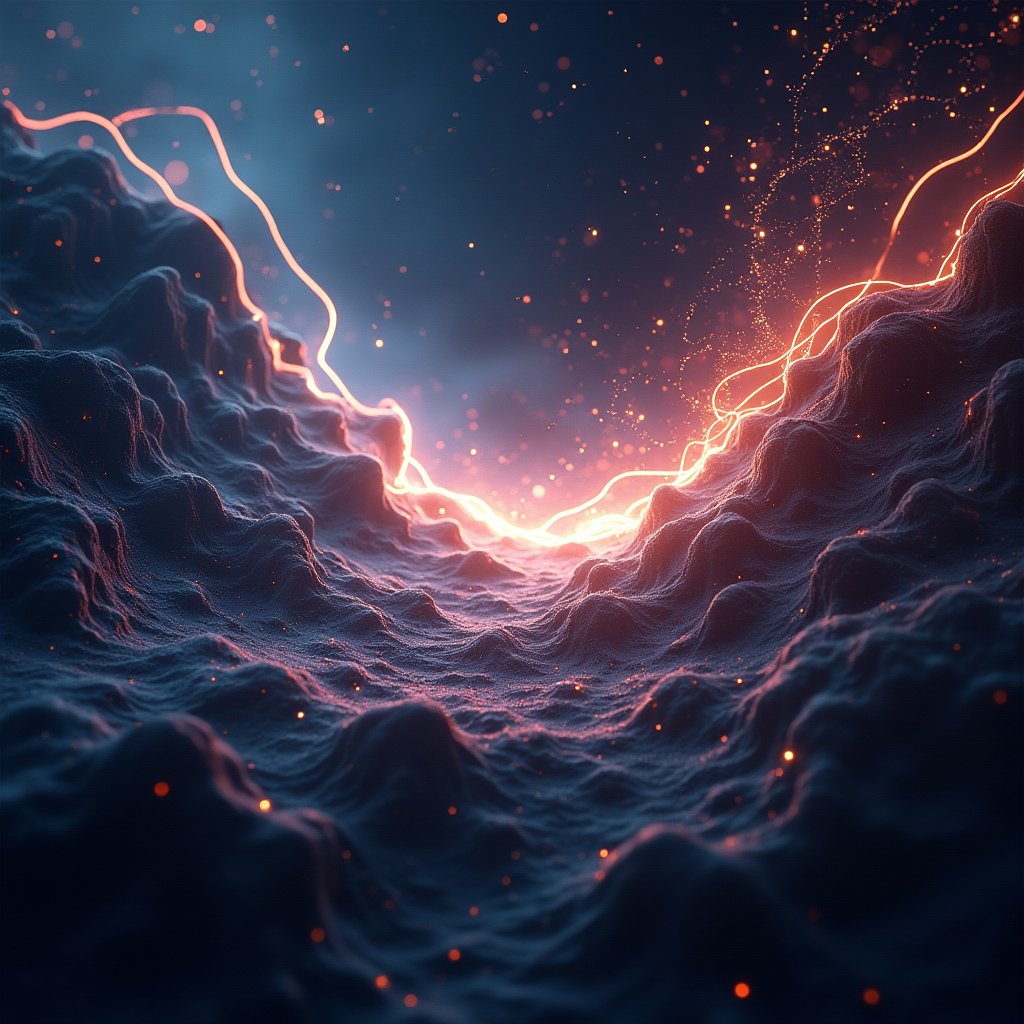

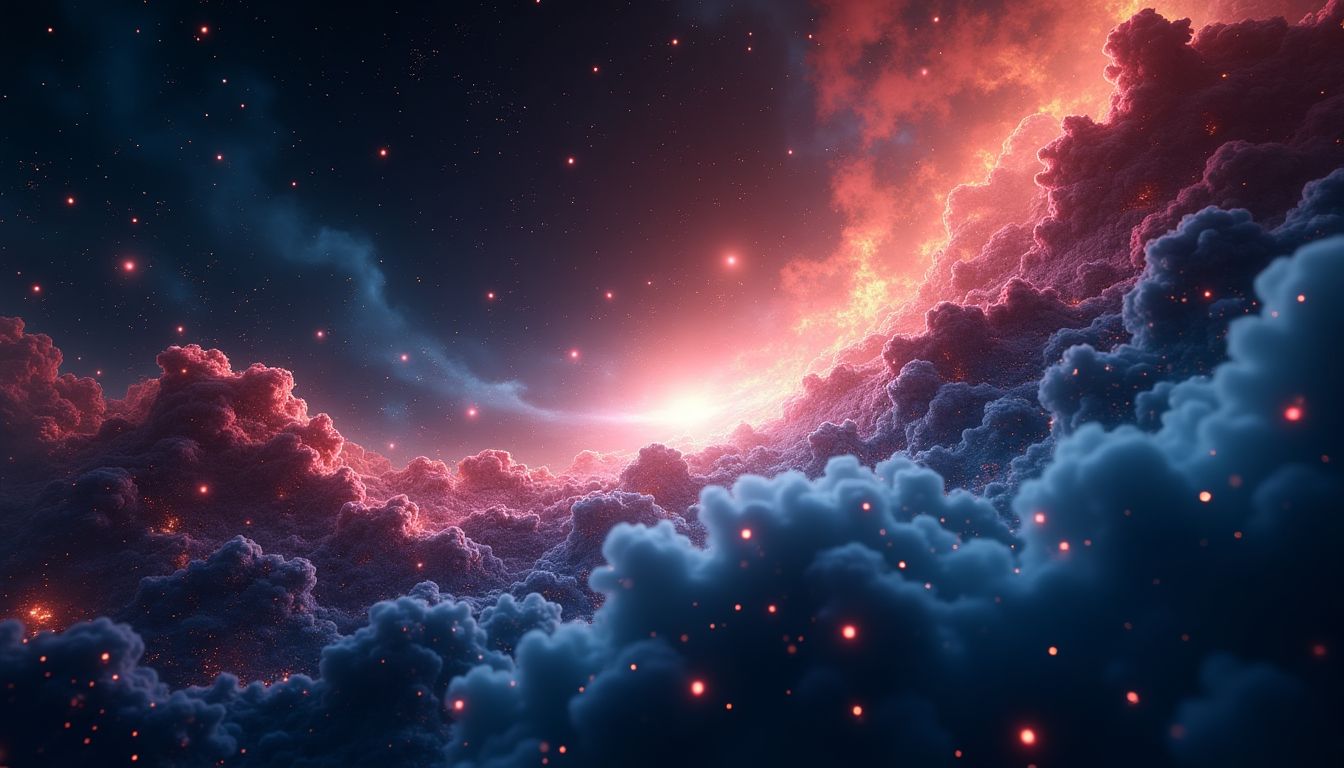
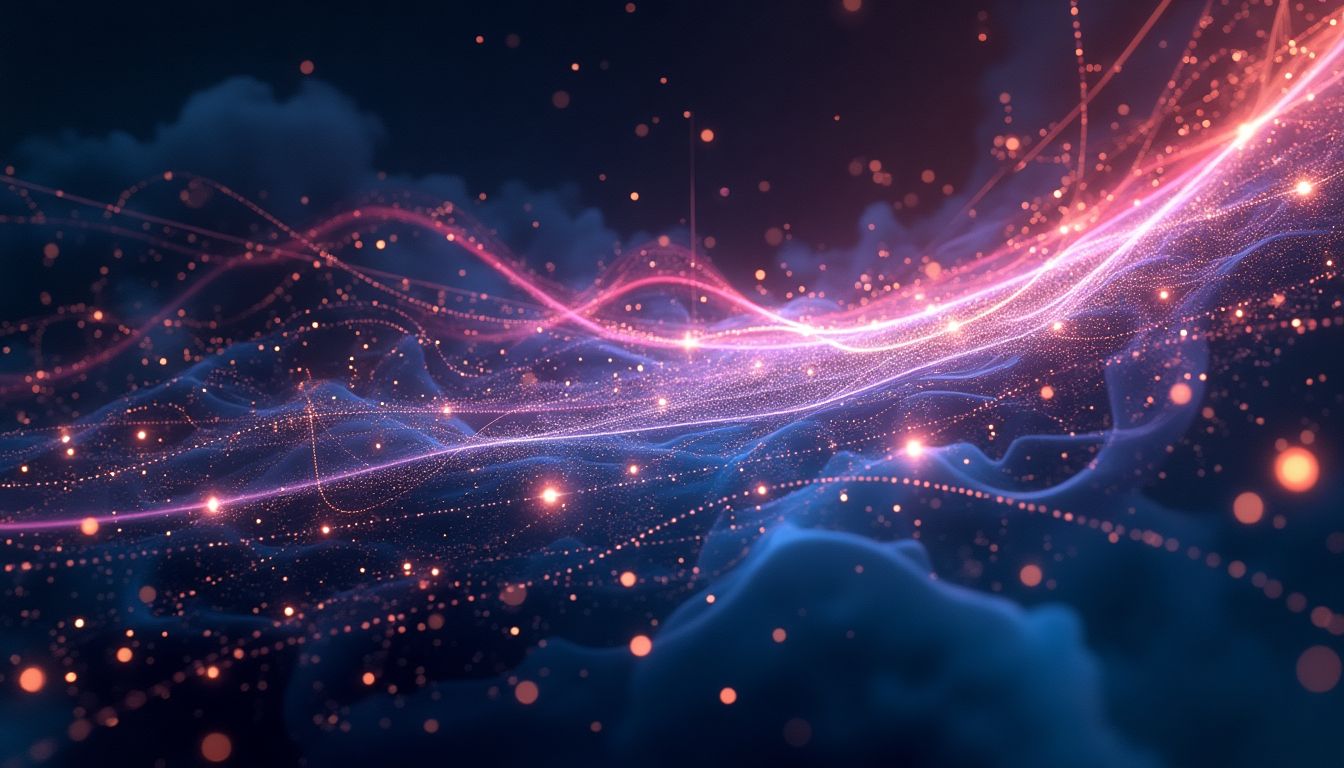



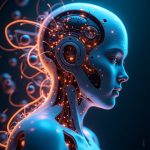
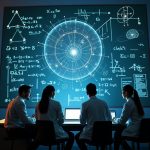




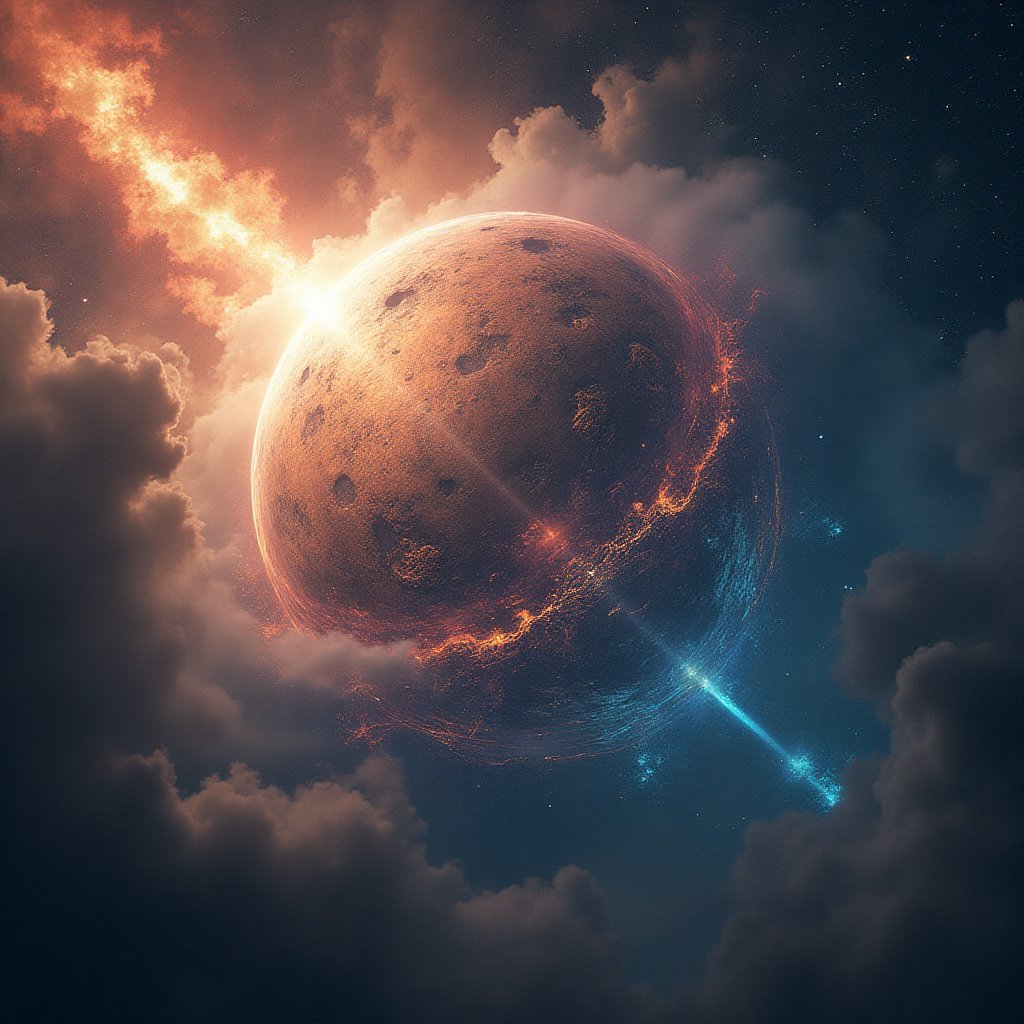















2 comments